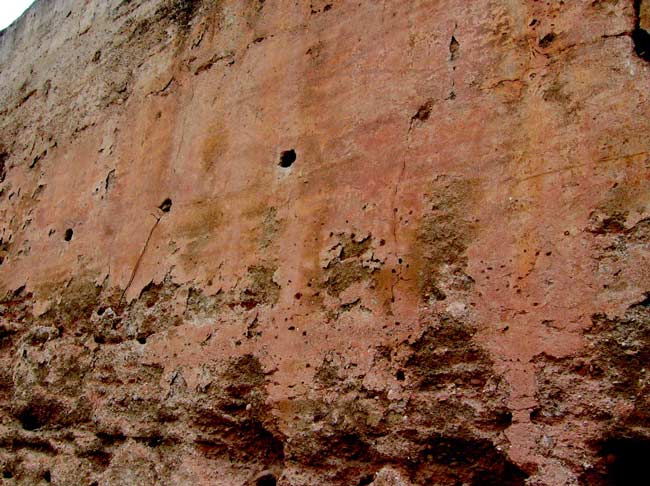Ancient Walls Covered With Powdered Animal Bones

Scientists have discovered a 14th century brick oven made to bake animal bones for a strange purpose.
The burned bones were made into a powder, then mixed with other material to make a protective coating to strengthen the grand medieval walls of a Muslim structure in what is now Granada, Spain.
Decorative and protective layers, called patinas, cover the outsides of many buildings built by ancient civilizations. The ancients were quite the chemists. Ingredients often included lime or gypsum, plus quartz, feldspar or clay minerals. Iron oxides and hydroxides were added for color. Organic ingredients ranged from milk and eggs to oil and wax and even blood and urine, the researchers note.
The new study ties the oven's purpose with the patina on a wall.
"This is the first report of burnt bones in a patina on a Muslim monument, as well as the archaeological artifacts — the oven and raw materials — used to produce them," said study team member Carolina Cardell of the University of Granada.
Using a new method to identify the components of historical artifacts, the team found hydroxyapatite, the main component in bone pigments and animal bones, in the patina of Granada's medieval walls. Their new test is inexpensive, identifies chemicals more accurately and — most importantly — does not harm the historical artifacts.
The findings were detailed this week in the semi-monthly journal Analytical Chemistry.
Sign up for the Live Science daily newsletter now
Get the world’s most fascinating discoveries delivered straight to your inbox.
Powdered burnt bone have been identified in patinas used in Greco-Latin, Celtic, and Medieval Christian monuments, the researcher write, "but never, to our knowledge, in Medieval Moorish constructions."
- Parthenon Once a Riot of Color
- Medieval Torture's 10 Biggest Myths
- Why Does Copper Turn Green?
Robert is an independent health and science journalist and writer based in Phoenix, Arizona. He is a former editor-in-chief of Live Science with over 20 years of experience as a reporter and editor. He has worked on websites such as Space.com and Tom's Guide, and is a contributor on Medium, covering how we age and how to optimize the mind and body through time. He has a journalism degree from Humboldt State University in California.
Why is yawning contagious?
Scientific consensus shows race is a human invention, not biological reality










